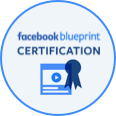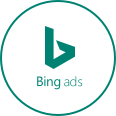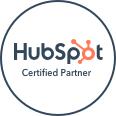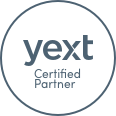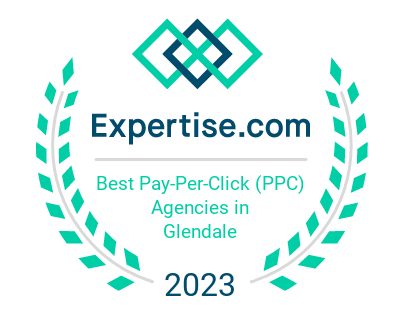Moving the needle for website ranking and visibility befuddles even the most experienced on-line marketing professionals in some cases. So, you can imagine what it is like for a small business owner looking to improve on-line performance while saving a few dollars by doing it themselves is up against. The good news is that we have put together a list of five things that you can do, in plain English, to put your website on the map in as little as one work week. Take a look at our game plan below to see how easy it is to get started with local SEO.
Day 1: Get Reviews
 Studies have shown time and time again that over 2/3 of the people that shop on-line read customer reviews before they make a purchase. Search engines know this and work to rank websites that have more positive reviews higher up on their search engine results pages. This is why it is imperative to your on-line success to have positive customer reviews.
Studies have shown time and time again that over 2/3 of the people that shop on-line read customer reviews before they make a purchase. Search engines know this and work to rank websites that have more positive reviews higher up on their search engine results pages. This is why it is imperative to your on-line success to have positive customer reviews.
Today, it is not enough to just have positive reviews, though. You need to have them listed in your Google My Business page. You also need to have them appear on Yelp and Facebook. These are secondary locations, however. Focus your efforts on Google My Business.
The good news is that getting the reviews you need is fairly easy. There is a link on the Google My Business page that allows you to directly email your customers and ask them to provide you with positive reviews. To makes your mailings the most successful, change the URL for your Google My Business page that usually appears like this:
Http://plus.google.com/+YOUR_BUSINESS_NAME_HERE/posts
And then replace /posts with /?hl=en&review=
Then add this link to a form email that you send out. This makes it easy for your customer to click the link and be taken directly to the reviews page for your business. If you contact your customers directly and let them know the email is coming, you are much more likely to get a response from your customers. After you send out your emails, wait about a month and then lather, rinse, repeat. Do the same thing for Facebook and Yelp.
Day 2: Keyword and Location
On page optimization is critical for both users and search engines. The problem is that most people do not understand how to do it for local SEO. A local page should be displaying both a relevant keyword as well as a location. See the below example for how you should structure your titles:
URL (example: YOURBUSINESSNAME.com/local-seo-your-county-ST)
Title (example: Your County Choice for Local SEO)
H1 (example: It is time Your County took a different approach on Local SEO)
You should notice that there is no exact match going on with keywords. This is intentional so that we could demonstrate the ability to incorporate keywords without sacrificing branding.
Here is what you need to know about successful page optimization:
Use keywords ONE TIME only on each page. Keyword stuffing is taboo.
For each landing page, you want to use one keyword/location combination in each of the three areas listed above.
Make sure that the content on locally optimized pages is local and relevant.
Day 3: Local Directories
The next step is to dominate the local directories. You need to begin claiming and completing profiles in as many local directories as you can get to. Make sure you are your pertinent information such as your business name, address, telephone number, URL and other information is identical across all of the different listings and complete each profile 100%. Do not forget to add high quality images to make your listing pop. And do not forget to add Google My Business if you do not already have a completed profile. Here is a list of must have directory profiles:
- Google My Business
- Yelp
- Foursquare
- Tripadvisor
- Superpages
- Infogroup
- YP
- Factual
- Best of the Web
- Citysearch
- Bing
- Yahoo
- Axciom
- DMOZ
- BBB
Don not forget niche specific directories as they can really help you get noticed.
Day 4: Partners
Getting links from other websites is also extremely important. Building links means building relationships with other website owners and local business owners. One of the fastest ways to do this is to create partners pages. Here is how to do it:
Outline who your business partners are. Take a minute to inventory who you already have relationships with and then make a separate list of partners you would like to have.
Create a page on your website that includes all of the logos of the partners with whom you already have an established relationship with as well as those who you want to work on building a relationship with. Then add it to your footer.
Contact each partner you have listed on your page and ask if they will reciprocate your efforts. Explain how the cooperative effort will be a benefit for all of the partners. If it makes it easier, you can even offer to make a page for them to use. Use this as an opportunity to reach out to your potential partners and make introductions.
Partner pages work because Google likes to highlight businesses that seem to be popular. If they start finding links that relate back to your website, it must be popular and therefore should be recognized.
Day 5: Write and Promote a Piece of Local Content
On your last day, it is time to start really focusing on your content. Content is still king when it comes to ranking on search engines, and is even more so when it comes to ranking locally. Spend some time creating really great content that relates to local events and then placing them on pages that have been optimized for this specific location. To make great content you need to take into account the following elements:
Identify your audience
Find out what they are interested in, find an angle that relates to your business and then create that content.
Begin promoting it socially and through other outlets.


